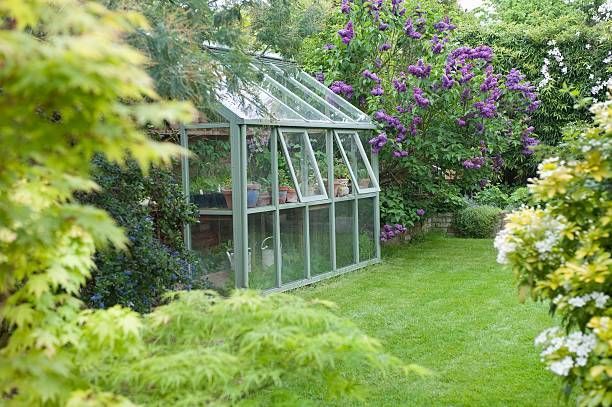Monarch Greenhouse Utah: Raising Expanding Spaces with Precision Construction
Wiki Article
The Future of Greenhouses: Innovations in Sustainable Farming
Are you curious regarding the future of greenhouses and just how they are changing sustainable agriculture? From advanced climate control systems to vertical farming methods, water-efficient irrigation techniques, sustainable power assimilation, and clever information analytics, these innovations are changing the means we expand our food.Advanced Environment Control Systems
To achieve optimal expanding problems, you can count on the innovations in greenhouses with innovative environment control systems. These systems have actually revolutionized the way we cultivate crops, providing a controlled environment that contributes to plant development. With these cutting-edge systems, you can currently control temperature, humidity, light levels, and even carbon dioxide focus to develop the excellent conditions for your plants to flourish.One of the key functions of these advanced climate control systems is their capability to manage temperature. By utilizing sensors and automated controls, the greenhouse can readjust the temperature level based on the particular requirements of the plants. This makes certain that they are never ever exposed to extreme warmth or chilly, which can be harmful to their growth.
Moisture control is one more important aspect of these systems. By keeping the suitable humidity degrees, you can protect against problems such as mold, mold, and disease from influencing your plants. These systems can also manage the amount of light that gets to the plants, making certain that they get the optimal quantity for photosynthesis.
Additionally, progressed climate control systems can also control carbon dioxide focus. By increasing the degrees of CO2 in the greenhouse, you can boost plant growth and productivity. This is particularly useful in areas with reduced natural carbon dioxide levels.
Upright Farming Techniques
One vital upright farming strategy is making use of piled growing systems. Stacked expanding systems are commonly utilized in metropolitan locations where room is limited.One popular technique is called upright hydroponics, where plants are expanded in nutrient-rich water without dirt. This technique is highly efficient as it minimizes water use by approximately 90% contrasted to traditional farming methods. Additionally, because the plants are grown inside your home, they are secured from parasites and conditions, reducing the demand for pesticides.
Another technique is aeroponics, which entails suspending the plant roots in a mist or air setting. This approach permits for optimum nutrient absorption and oxygenation, causing faster development and greater yields. Aeroponics also uses much less water than typical farming and can be applied in upright systems, making it a preferred option for vertical farming.
Water-efficient Irrigation Methods
When it comes to carrying out water-efficient irrigation techniques in sustainable farming,Making best use of water preservation is necessary. With worldwide water scarcity becoming a my link pushing problem, it is essential to create ingenious strategies that optimize water use in greenhouse procedures.One appealing method is drip irrigation, which provides water straight to the plant roots, minimizing waste and dissipation. By using a network of tubes with tiny emitters, water is applied slowly and specifically, making sure that plants receive the essential moisture without excess drainage.
Another reliable technique is the usage of soil dampness sensors. These tools measure the wetness content in the soil and give real-time data to farmers. By checking the soil's dampness levels, farmers can precisely establish when and exactly how much water to use, avoiding over-irrigation.
In addition, the execution of rain harvesting systems is acquiring popularity in greenhouse farming. Gathering rainwater from roofs and keeping it in tanks permits farmers to use this natural deposit for watering functions, reducing dependence web link on standard water sources.
Last but not least, the fostering of automated irrigation systems can dramatically enhance water efficiency. These systems use sensing units to spot dirt moisture degrees and climate condition, changing watering routines as necessary. By enhancing water use based on real plant needs, these systems can lower water waste and promote lasting farming methods.
Renewable Resource Combination
Sustainable power combination in greenhouses offers a number of advantages, consisting of lowered operating costs and lowered dependence on non-renewable energy sources. The created power can after that be utilized to run various procedures within the greenhouse, such as home heating, lighting, and air flow systems. These wind turbines harness wind power and transform it right into electrical power, which can be used to supplement the power needs of the greenhouse.Smart Information Analytics and Automation
To boost the effectiveness of your greenhouse operations and enhance resource use, consider applying wise information analytics and automation. Smart data analytics entails gathering and analyzing information from various sensors and tools within your greenhouse. By keeping an eye on factors such as temperature, humidity, light levels, and dirt moisture, you can obtain important understandings into the health and wellness and development of your plants. This data can assist you make educated decisions regarding adjusting environmental problems, optimizing irrigation timetables, and avoiding possible concerns before they develop.
This can include automating the control of lighting, ventilation, irrigation systems, and nutrient delivery. By automating these processes, you can ensure that your plants receive the right problems and nutrients at the appropriate time, without the demand for consistent hand-operated treatment.
In addition, clever information analytics and automation can collaborate synergistically. The data collected by sensing units can be made use of to notify automatic systems, enabling them to make real-time adjustments based on the existing problems. This combination of data analytics and automation can lead to extra effective and accurate source appropriation, inevitably leading to higher returns and much better crop quality.
Verdict
In final thought, the future of greenhouses in lasting farming looks promising. With innovative climate control systems, upright farming methods, water-efficient irrigation methods, and renewable power integration, greenhouses are ending up being more eco friendly and effective.By optimizing water use based on actual plant requirements, these systems can lower water waste and promote lasting farming techniques.

Report this wiki page